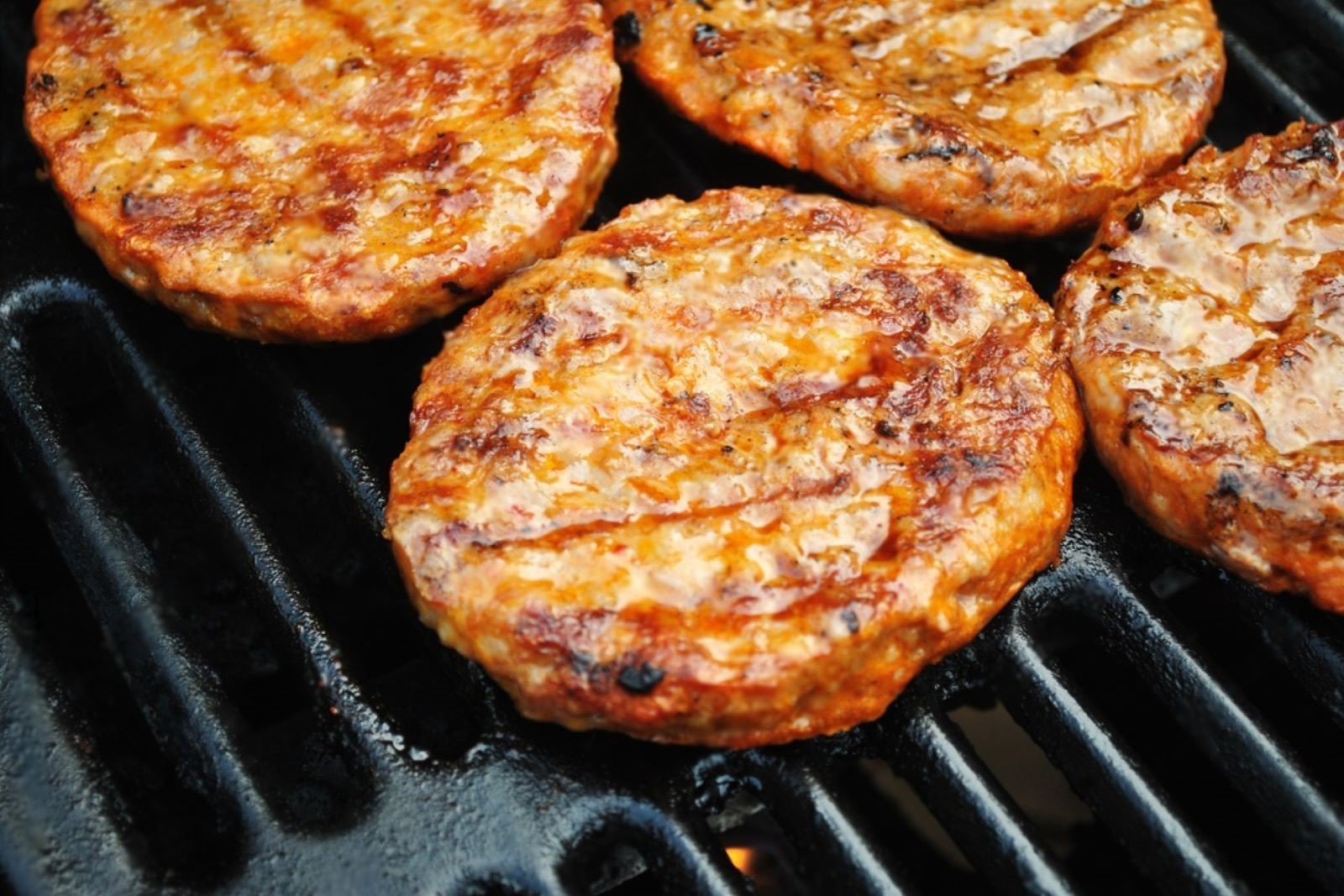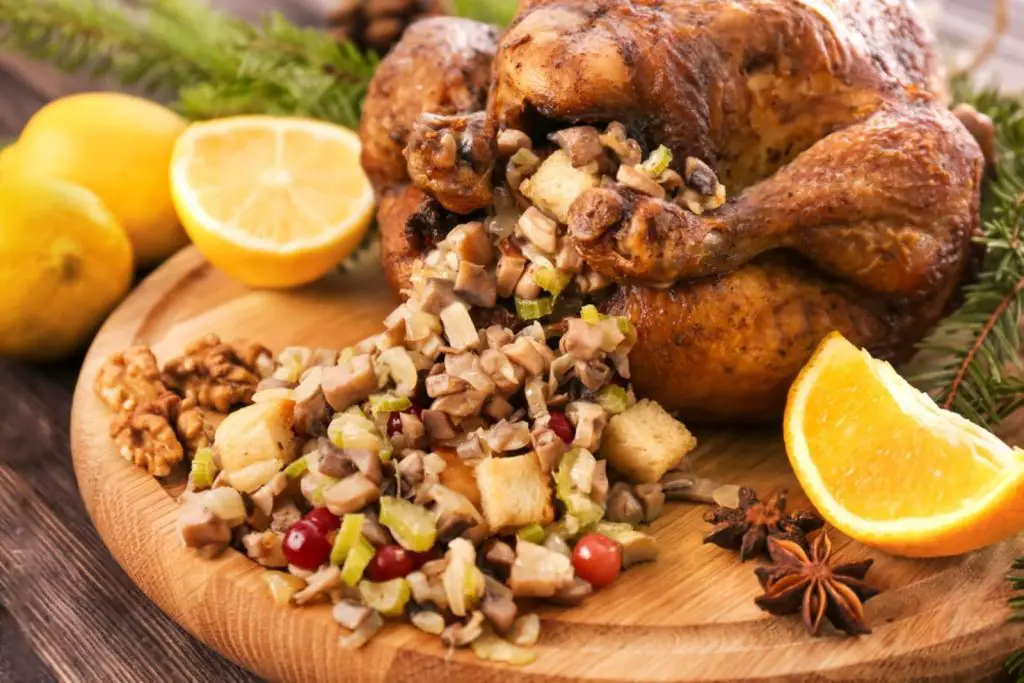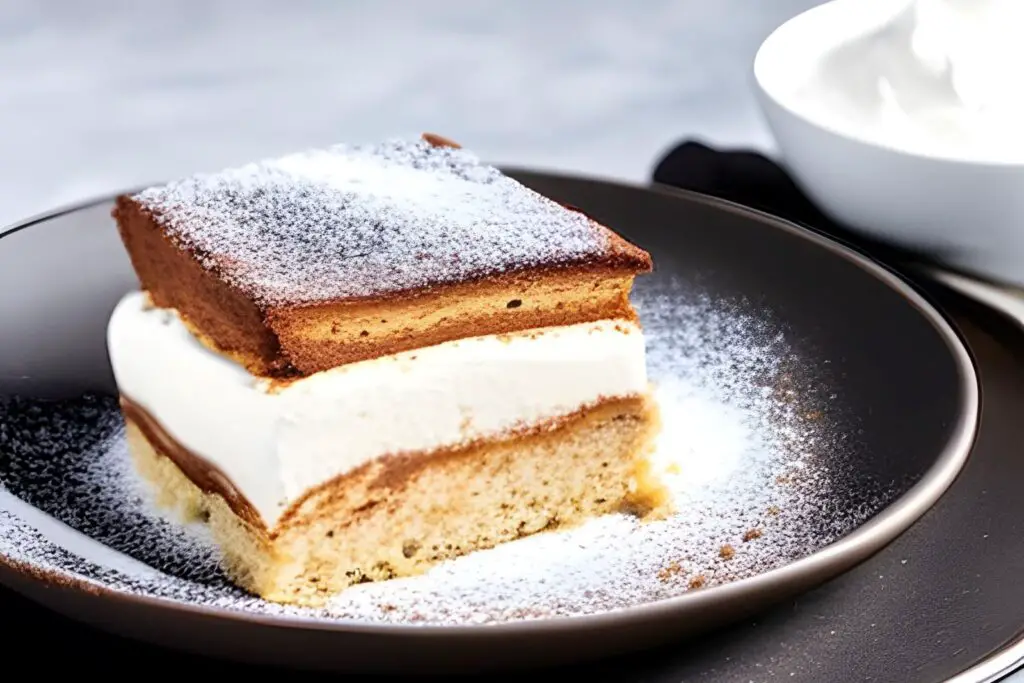
Sausage patties are a flavorful and convenient breakfast option loved by many. These savory delights can be made from a variety of meats and seasonings, offering a wide range of tastes to suit different preferences. Freezing sausage patties is a smart way to ensure that you always have a quick and delicious breakfast option on hand. By following a few simple steps, you can freeze sausage patties while preserving their taste and quality. In this article, we will walk you through the process of freezing sausage patties effectively, so you can enjoy them anytime you like.
Here’s a step-by-step guide on how to freeze sausage patties:
Step 1: Choose your sausage patties
When embarking on the journey of freezing sausage patties, the first and foremost step is to carefully select the right patties. The quality of the sausage patties you choose plays a crucial role in determining the flavor, texture, and overall enjoyment of the final product. Whether you’re a fan of the classic pork sausage, lean chicken or turkey, or even exploring plant-based alternatives, your preference matters.
Opt for sausage patties that are fresh and devoid of any indications of spoilage. Inspect the patties for any off-putting odors, slimy textures, or unusual discolorations. A rich, meaty aroma is a good sign of freshness, while any unpleasant or sour smells could indicate spoilage. Likewise, the surface of the patties should appear vibrant and uniform in color. Any patches of unusual discoloration might be a sign that the meat has started to deteriorate.
If you’re opting for meat alternatives or special blends, ensure that the ingredients used are of high quality and match your dietary preferences. Read labels carefully to avoid any potential allergens or additives that you might want to avoid. This step is essential in laying the foundation for a delicious and satisfying frozen sausage patty experience.
Step 2: Prepare the patties
Once you’ve sourced the ideal sausage patties, the next step in your quest to freeze them effectively involves careful preparation. This stage allows you to infuse your sausage patties with flavors that resonate with your taste buds, as well as shape them to your desired specifications.
Before freezing, take a moment to consider the taste profile you’d like to achieve. This is the perfect opportunity to bring your culinary creativity to the forefront. Experiment with an array of spices and herbs that resonate with your palate. Whether you lean towards the warmth of sage and thyme, the zing of red pepper flakes, or the aromatic allure of garlic and onion, seasoning your patties can elevate them from good to outstanding.
Gently massage the chosen seasonings onto the patties, ensuring an even distribution. This not only enhances the flavor but also permeates the meat, creating a harmonious marriage of tastes that will be maintained even after freezing and cooking.
Moreover, the shape and thickness of the patties contribute significantly to their final texture and cooking time. Whether you’re aiming for a hearty breakfast sandwich, a topping for a homemade pizza, or a standalone protein-rich dish, molding the patties to your preferred dimensions is essential. Keep in mind that thicker patties might require slightly longer cooking times, while thinner ones could be more suited for quicker meals.
Can I season sausage patties after thawing?
Seasoning sausage patties after thawing is possible and allows for customized flavors. However, seasoning before freezing is often preferred to enhance taste during storage. Post-thaw seasoning gives flexibility, while pre-thaw seasoning melds flavors.
Step 3: Cook the patties
In the journey to preserve the delectable essence of sausage patties through freezing, the act of cooking before freezing holds paramount significance. This step isn’t just a culinary formality; rather, it’s a strategic move that ensures the optimal texture, taste, and quality of the patties when you decide to savor them in the future.
When cooking the sausage patties, you have the flexibility to choose from various methods such as using a skillet, oven, or grill. Each method imbues the patties with distinct characteristics, so consider your culinary vision as you make your choice. A skillet, for example, imparts a savory crustiness, while the oven ensures even cooking throughout. The grill, with its smoky nuances, can add an extra layer of flavor to the patties.
Whichever method you opt for, the key lies in ensuring that the sausage patties are fully cooked. This involves achieving a desirable internal temperature that eliminates any risk of bacterial contamination. Aim for an internal temperature of at least 160°F (71°C), which is the recommended safe temperature for cooked ground meats.
Cook the patties until they develop a golden-brown exterior. This visual cue is an indicator of the flavorful Maillard reaction taking place – a chemical process that enhances the taste and aroma of the patties.
Why cook before freezing? The answer lies in maintaining the sausage patties’ integrity during freezing and reheating. Cooking before freezing helps to set the texture and flavor in a way that withstands the freezing and thawing process. It prevents undesirable changes in texture and taste that can occur if the patties were frozen raw.
Can I freeze sausage patties that are still raw?
Yes, you can freeze raw sausage patties. However, cooking them before freezing is recommended to maintain texture and taste. Raw patties can be frozen if sealed airtight, but cooked patties freeze better.
Step 4: Cool down the patties
After the cooking process, as the aroma of freshly cooked sausage patties fills your kitchen, it’s essential to exercise patience and allow them to cool down to room temperature. This seemingly simple step plays a pivotal role in safeguarding the integrity and quality of your frozen sausage patties.
The act of cooling down holds a hidden purpose – it’s all about preventing the formation of condensation inside the packaging. As the warm patties rest, any residual heat within them can create moisture, and when the patties are packaged while still warm, this moisture can transform into ice crystals during the freezing process. These ice crystals may lead to freezer burn, a phenomenon that negatively impacts the texture and taste of the patties over time.
By allowing the cooked sausage patties to cool to room temperature, you’re essentially allowing the excess moisture within them to dissipate naturally. This minimizes the potential for condensation to form inside the packaging when they are eventually sealed for freezing.
Imagine this step as a protective shield against freezer burn, ensuring that your future culinary experiences remain untarnished. In essence, you’re providing your sausage patties with a proper send-off to their icy abode – one that guarantees their journey into the freezer is met with optimal conditions for long-term preservation.
Is it necessary to remove excess grease before freezing cooked sausage patties?
Yes, removing excess grease before freezing is advisable. Excess grease can lead to off-flavors and freezer burn. Patting the patties with paper towels helps remove some grease.
Step 5: Arrange on a baking sheet
As you progress in your journey of freezing sausage patties, the importance of thoughtful arrangement becomes evident in this step. Once your cooked sausage patties have gracefully cooled to room temperature, it’s time to give them a temporary resting place on a baking sheet lined with parchment paper.
This arrangement isn’t just about aesthetics; it serves a critical purpose in the freezing process. Placing the patties on a baking sheet ensures that each patty maintains its individuality, preventing them from sticking together as they freeze. This meticulous spacing allows for efficient and effective freezing, as air can circulate freely around each patty.
The parchment paper acts as a non-stick barrier, preventing the patties from adhering to the baking sheet. This layer of separation is crucial, as it ensures that the patties can be easily removed from the baking sheet once they are fully frozen and ready to be packaged for long-term storage.
Imagine this step as the orchestra conductor guiding the ensemble of your sausage patties to a harmonious frozen symphony. The individual positioning of each patty on the baking sheet ensures that they maintain their unique identities, allowing you to access them individually when needed, rather than wrestling with a frozen clump of patties.
Step 6: Flash-freeze the patties
In the process of freezing sausage patties, the concept of “flash-freezing” emerges as a critical technique that contributes to the overall success of your freezing endeavor. As you place the meticulously arranged sausage patties on the baking sheet into the freezer, you’re embarking on a crucial step that ensures not only their individuality but also the convenience of future meal preparations.
Flash-freezing refers to the swift and intense freezing of individual items to prevent the formation of large ice crystals. This rapid freezing process is essential for maintaining the texture and quality of the patties. By placing the baking sheet with the patties directly into the freezer, you’re exposing them to a frigid environment that swiftly reduces their temperature.
The reason for this approach lies in the size and formation of ice crystals. If the patties were frozen slowly, the water molecules within them would have more time to form larger ice crystals. These crystals can disrupt the cellular structure of the patties, leading to a loss of moisture and potentially affecting the overall taste and texture.
Flash-freezing, on the other hand, prevents the formation of large ice crystals. The swift freezing process forms smaller, less damaging ice crystals that don’t disrupt the internal structure of the patties as much. This results in patties that maintain their integrity and retain moisture upon thawing and cooking.
Additionally, flash-freezing helps individual patties maintain their separation. As each patty freezes quickly, there’s less chance of them sticking together. This is particularly important when it comes to packaging, as you’ll want to ensure easy access to each patty without the hassle of prying them apart.
Step 7: Package and seal
With your sausage patties now expertly flash-frozen to maintain their texture and taste, the time has come to carefully transition them to their long-term abode in the freezer. This step involves packaging and sealing the patties, a process that goes beyond mere containment and delves into the realm of preserving their essence.
As you prepare to package your frozen treasures, the primary objective is to create a protective barrier that shields the patties from the harsh freezer environment, ultimately ensuring their longevity and quality.
Start by selecting airtight freezer-safe containers or resealable plastic bags. These vessels are specially designed to withstand the cold temperatures and prevent air and moisture from infiltrating. Choose containers or bags that are appropriately sized for your patties, allowing them to be comfortably arranged without excessive compression.
When placing the patties within the containers or bags, remember the importance of minimizing the presence of air. Excess air can lead to freezer burn, a process where moisture within the air turns into ice crystals on the surface of the patties, compromising their texture and flavor. Press down gently on the container or bag to encourage any trapped air to escape before sealing.
Sealing is a pivotal act, as it locks in the freshness of your sausage patties and safeguards them from potential freezer-related pitfalls. Ensure that the containers or bags are securely closed, leaving no gaps for air to seep in. For plastic bags, press out as much air as possible before sealing them tightly.
This step is akin to putting your creations in a frozen time capsule, preserving their savory attributes until you’re ready to enjoy them. By meticulously packaging and sealing your sausage patties, you’re extending an invitation for a future feast that remains unmarred by the passage of time.
Can I freeze sausage patties in bulk or should I portion them first?
You can freeze sausage patties in bulk, but portioning is recommended. Portioning before freezing aids in easy retrieval and prevents the need to thaw more than required. For bulk freezing, separate patties with parchment paper for convenient separation later.
Can I freeze sausage patties in their original packaging?
It’s best to transfer sausage patties to airtight containers or bags for optimal freezing. Original packaging might not provide sufficient protection against freezer burn. Proper packaging preserves taste and texture.
Step 8: Label and date
As you finalize the packaging and sealing of your sausage patties for their icy sojourn, there’s a crucial yet often overlooked step that can greatly enhance your future freezing endeavors: labeling and dating. This seemingly straightforward act serves as an indispensable roadmap for your culinary explorations, ensuring that you’re well-equipped to navigate the frozen treasures that lie within your freezer.
Labeling involves clearly marking the containers or bags with information that provides insights into the contents. In this case, you’ll want to specify that you’re dealing with sausage patties. This seemingly simple detail can be particularly useful, especially if your freezer is a treasure trove of various frozen goodies.
Next comes the dating aspect. Write down the current date on the label – the day you’ve embarked on this freezing journey. This timestamp is more significant than it might seem at first glance. It’s your key to the past, indicating when your sausage patties were introduced to the freezer. As time passes, this date will serve as a reminder of how long the patties have been in the freezer.
Why is this information vital? Just like all good things in life, your frozen creations have a timeline. Over time, even frozen foods can experience changes in quality, taste, and texture. By keeping track of the freezing date, you’re armed with the knowledge needed to determine how long your sausage patties have been frozen.
This knowledge empowers you to plan your meals effectively, utilizing the oldest frozen items first to ensure optimal taste and quality. It also helps you avoid the disappointment of finding items that have been in the freezer for far too long and might not be as enjoyable as you’d hope.
Step 9: Store in the freezer
With your carefully prepared, seasoned, and flash-frozen sausage patties properly packaged, labeled, and dated, it’s time to bring this freezing process to its grand finale by placing them within the frosty confines of your freezer. This is the ultimate culmination of your efforts, where your culinary creations rest until the moment you’re ready to turn them into a delightful meal.
As you position the sealed sausage patties in the freezer, you’re ushering them into a world of low temperatures that serve as a natural pause button, preserving their texture, taste, and quality until you’re prepared to summon them back to life.
The controlled environment of the freezer acts as a guardian against the ravages of time and temperature. At these frigid temperatures, bacterial growth is significantly slowed down, minimizing the risk of spoilage and maintaining the patties’ safety for consumption over an extended period.
It’s important to note that while your sausage patties can be stored in the freezer for up to 2-3 months, the quality and taste remain relatively unchanged. Beyond this time frame, the patties might still be safe to eat, but they could potentially experience some loss of flavor, texture, and overall appeal. Sticking to the recommended storage period ensures that you’ll enjoy the best possible culinary experience when you finally decide to thaw and cook them.
Think of your freezer as a treasure chest, where each sealed package holds a promise of future satisfaction. It’s a space where you’ve orchestrated the preservation of your culinary creations, carefully following each step to ensure that your future self will be met with a delectable reward.
Other related questions
How do I defrost sausage patties?
To defrost sausage patties, place them in the refrigerator overnight. Alternatively, use the defrost setting on your microwave, ensuring even heating. For quicker thawing, seal them in a plastic bag and submerge in cold water, changing the water every 30 minutes.
Is it safe to reheat frozen cooked sausage patties?
Certainly, reheating frozen cooked sausage patties is safe. Thaw them in the fridge, then reheat in the microwave, oven, or skillet until they reach 165°F (74°C) internal temperature for food safety.
Can I refreeze sausage patties?
Yes, you can refreeze sausage patties if they were thawed in the refrigerator. However, repeated thawing and refreezing can affect quality. It’s best to cook them after the first thaw to ensure safety and preserve taste.
How do I know if the sausage patties have gone bad after being frozen?
Signs of bad frozen sausage patties include off-putting odor, freezer burn (dry, discolored patches), or changes in texture. Thaw in the fridge, inspect for color/texture changes, and note any sour or rancid smells. If doubt persists, discard to ensure safety.
Are there specific guidelines for freezing plant-based sausage patties?
Similar freezing guidelines apply to plant-based sausage patties. Seal them airtight to maintain flavor and texture. Cooking before freezing is recommended for safety and quality.








